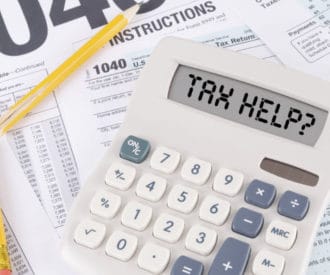
For retirees, rising inflation can present financial challenges. Attorney Lyle Solomon explains 4 key steps to managing retirement during times of rising inflation.
For retirees, rising inflation can present financial challenges. By raising prices, inflation lowers the purchasing power of your savings.
When choosing your retirement income strategy, it can be crucial to take into account higher inflation because it is often unpredictable.
You might run out of money if your living costs increase faster than the income your retirement savings can sustainably produce.
Figuring out how long inflation will last can be tough. Based on history, we know that the level of inflation changes over time.
But there are things you can do to reduce the negative effects of inflation.
By taking action now, you’ll be able to continue living off your retirement savings and income for years to come.
Here, I explain 4 key steps to managing retirement during times of rising inflation.
What is inflation and how does it affect your retirement?
Inflation is a rise in prices of goods and services over time.
Your retirement financial plan could be negatively impacted if you eventually need to withdraw more money from your retirement assets because inflation has raised prices and decreased your purchasing power.
How much monthly income you get vs. how much you’ll need to pay your monthly bills could change over time due to rising pricing.
Temporary increases in inflation, like what we’re experiencing now, might be alarming, especially if they haven’t happened in a while.
That’s why planning for potential short-term increases in inflation is a key component of a retirement strategy.
1. Analyze your budget
Review your bank and credit card statements from the previous three to six months to get a comprehensive view of your expenses, both day to day and longer term.
Then, make a list of everything you have spent to determine your monthly expenses.
If your spending has been increasing over the past few months, assess the growth over time. This helps you understand how inflation has changed the overall amount of your payments.
Next, consider your fixed and variable expenses carefully.
From month to month, fixed costs typically remain stable. Your utilities, phone bill, cable bill, rent or mortgage, and insurance costs all fall into the fixed costs category.
Your variable expenses are those that aren’t consistent, like the amount you spend on groceries, dining out, entertainment, hobbies, travel, etc.
Understand the current situation by figuring out whether you’re positive or negative each month based on your monthly income less your monthly expenses.
A wise move is to review your variable expenses to see if you can make any adjustments to save some money.
If you’re positive each month (have money left over after paying expenses), you might put that amount toward paying off high-interest debts or toward a savings account for emergencies.
Another option is to look into payday loan debt relief options or debt relief options for any other kind of debt you have.
High-interest debts like payday loans can severely affect your retirement funds, so you should take advantage of any opportunity to pay them down and get rid of them.
2. Invest in stocks
Historically, annual stock returns have been significantly higher than inflation rates.
Because of this, owning stocks in your retirement portfolio is one of the best strategies you can use to safeguard your funds against long-term inflation.
However, even though stock investments have better long-term profits, they also have more considerable short-term risks.
Typically, portfolios allocate a portion of your funds to bonds, which produce income more consistently, to help offset some of this short-term market risk.
But bonds might not be able to counteract inflation, especially when interest rates are low.
Check your portfolio to see if it has the right mix of assets in light of shifting market conditions and make adjustments to balance risk vs protect against inflation.
3. Have an emergency fund in place
Whenever possible, have an emergency fund or financial reserve in place to tide you over during challenging economic times.
Holding some cash rather than investing everything in stocks or bonds means you can use it as a cushion to pay expenses when costs have increased.
This is especially helpful when periods of inflation coincide with drops in the market value of your investments.
4. Consider the effects of inflation during regular updates to your financial plan
An accurate projection of your actual spending is necessary for an effective retirement plan.
Your retirement plan will need to be modified over time owing to changes in market conditions, inflation rates, or your specific needs.
Recommended for you:
- Financial Help for Seniors: 2,500+ Federal, State, & Private Benefits Programs
- 7 Sources of Home Repair Assistance for Seniors
- 4 Debt Forgiveness Options for Seniors
Guest contributor: Lyle Solomon has extensive legal experience as well as in-depth knowledge and experience in consumer finance and writing. He has been a member of the California State Bar since 2003. He graduated from the University of the Pacific’s McGeorge School of Law in Sacramento, California, in 1998, and currently works for the Oak View Law Group in California as a Principal Attorney.
This article wasn’t sponsored and doesn’t contain affiliate links. For more information, see How We Make Money.




